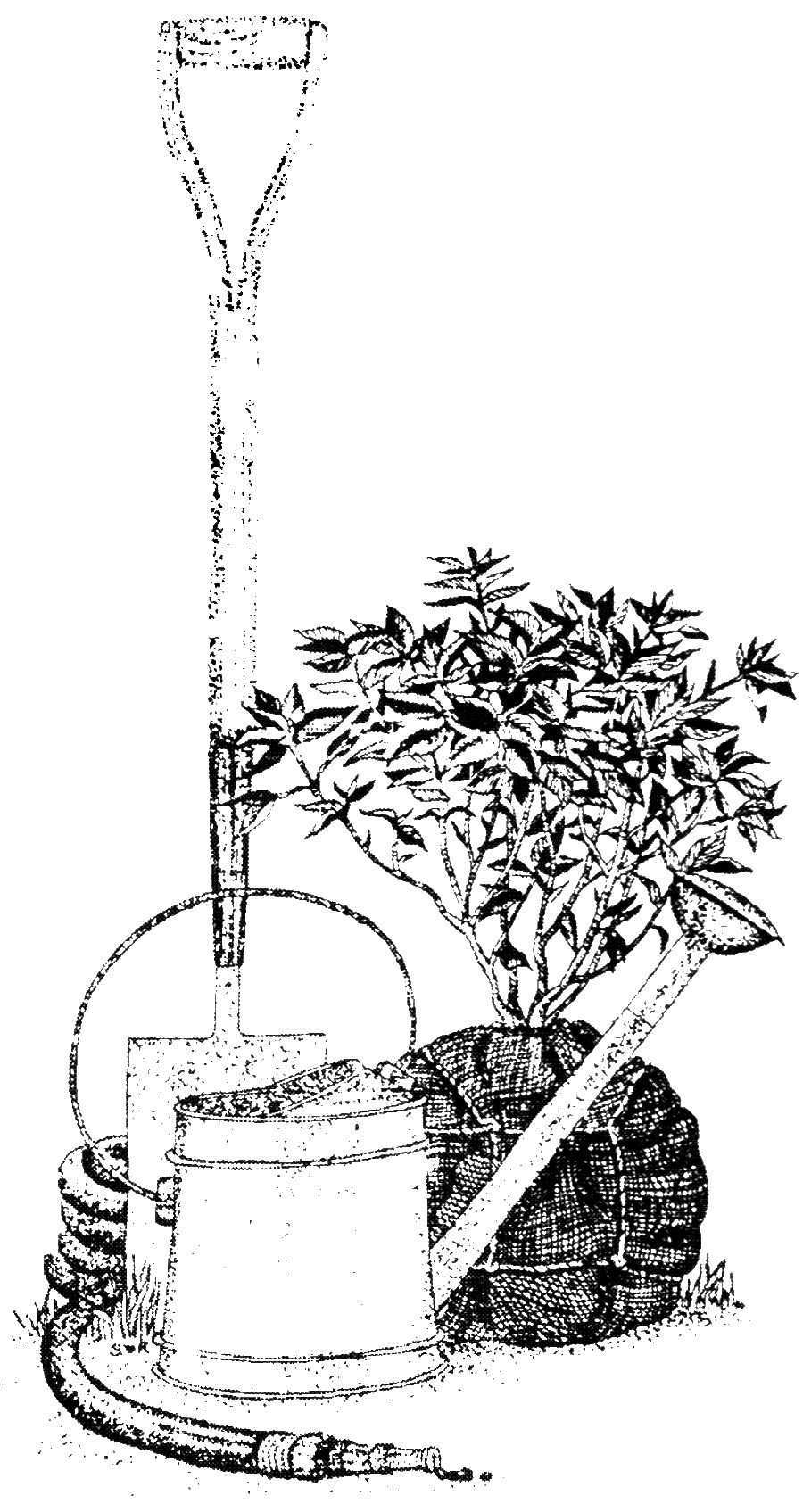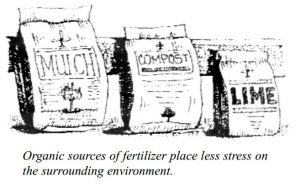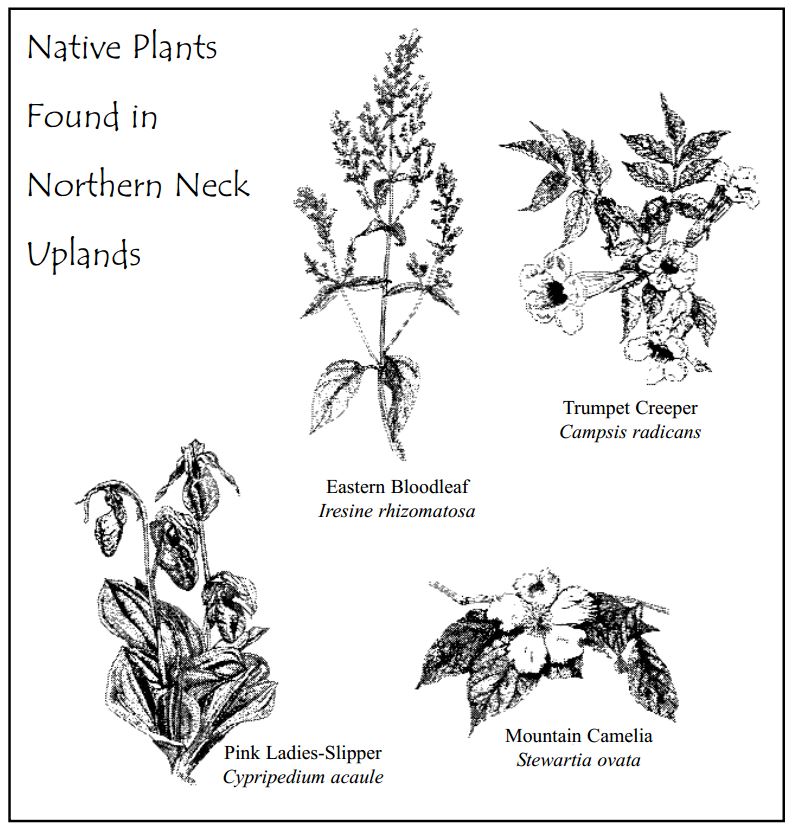For most of us, commercially available lawn fertilizers probably rank up there with prescription drugs as our closest connection to the “better living through chemistry” culture that took hold in this country after World War II. All of us have been conditioned to make our lawns and gardens green, greener, greenest—and the key to success is fertilizer. Unfortunately, we’ve also learned (through innocent, subliminal messages, to be sure) that “where some is enough, more must be better.”

Whether or not we can comfortably admit it, something sure seems silly about climbing into the family car or pickup truck, driving to the local garden center, and loading up the back with high-nitrogen fertilizer, only to race back to our hungry lawn and feed it in hopes that we’ll beat the rain. Our goal is to get the green stuff growing real thick and real fast so that we can come back weekly to mow it down with our gas-operated machines.
There is, unfortunately, a down side that’s not at all silly: high inputs of the wrong kind of fertilizer, applied at the wrong time and at the wrong rate, cause big problems for the region’s receiving waters. It just so happens that nitrogen and phosphorus, the first two numbers you see on a fertilizer formulation label (such as “10-10-10”), have been identified as the real culprits causing serious water-quality problems for Chesapeake Bay and its rivers.
The challenge is to understand how to use fertilizer products wisely. The key is to use only what you need, which begins by first conducting a soil test. Your local cooperative extension agent can help. (See “Sand & Soils.”) Once you know what you need, you can apply it when you need it, the way you should. Until then, you are quite literally shooting in the dark, and hurting the Bay.
To protect the Bay and help your lawn, consider organic alternatives. Organic used to mean “smelly with lots of flies around.” If you chose to spread something organic on your yard, the neighbors didn’t talk to you for six months. Today, however, the organic fertilizer list grows larger each season, and prices are coming down. Most organics will provide you with all of the nutrients your lawn needs, but at a slower, time-released pace. A little patience is required but will be well worth it.
What you’re after is a water-insoluble, nitrogen-based fertilizer, like a slow-release Excedrin for the lawn. You’ll get a quick shot in the arm of instantly available nitrogen, and the grass will “green up” fast. Also, some nitrogen will be held in reserve to leach into the root zone over time. The benefits of what are commonly called “WIN” products (for Water Insoluble Nitrogen) are obvious.
The time to feed your lawn is when it’s ready to start growing. Timing seems to benefit most from late fall fertilization, and mature shrubs can go a year, or certainly a cycle, between feedings.
The difficulty is choosing among the preponderance of different products available and understanding what each label means, then translating what the label says into something that fits your lawn.

The trick to knowing how much and how to apply it is in calculating the actual square footage of lawn area. But can you look out the window and know that you’re peering at 7,800 square feet of grass? The best way to figure out coverage is to break up your yard into small squares and then measure them out.
The final piece of the puzzle is determining proper application rates. This is usually expressed as a number of pounds per 1,000 square feet. In earlier days, fertilizer products were actually logical enough, yet many people get it wrong. First, identify your grass type. Cool-season grasses like tall and fine fescues, for example, use fertilizers more efficiently in the fall. Warm-season grasses, more prevalent here, will benefit from a spring application. Newly planted shrubs and trees can and do benefit from a little fertilizing in the spring. Mature trees, on the other hand, seem calibrated for an exact rate of recommended application by using matching fertilizer spreaders, which were loaned to customers free of charge by local nurserymen. Ah, the good ole days.
Today, most of us use broadcast fertilizer spreaders that we load up nearly full with whatever we just bought. Then we hit the ground running and hope for the best. Again, you must first do your homework. Match the purchased product to your spreader type. Take time to adjust your spreader according to that very tiny print on the instruction label on your bag. When in doubt, use less and walk faster.
Just as product decisions and application rates are critical to prudent fertilizer use, so is being certain that you provide an appropriate amount of water if nature doesn’t cooperate. On the Northern Neck, a rule of thumb for supplemental watering and irrigation for well-managed lawns is this: try to provide approximately one inch of supplemental water per week (during early morning or early evening) in dry summer months, in the absence of that much rainfall. You’d have to look pretty hard to find a more wasteful use of water, but you risk losing your lawn to fertilizer burn without it. And remember, no matter what you do, King Wiregrass will be at your feet, testing your wits along the way.
Given the complexity of fertilizer choices and application rates, a good argument could be made for taking a season off every now and then.

